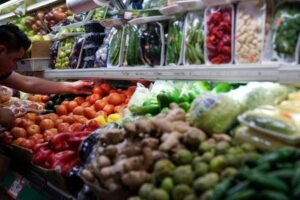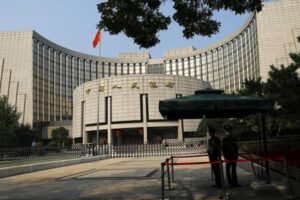BEIJING (Reuters) – China’s services activity expanded at the slowest pace in five months in June, a private-sector survey showed on Wednesday, as weakening demand weighed on post-pandemic recovery momentum.
The Caixin/S&P Global services purchasing managers’ index (PMI) eased to 53.9 in June from 57.1 in May, the lowest reading since January when COVID-19 swept through the country after authorities ditched anti-virus curbs. The 50-point mark separates expansion from contraction in activity.
The data broadly tracked the government’s official PMI released last week and showed a slowdown in service sector activity as demand for in-person services weakened.
After growing at a faster-than-expected pace in the first quarter, the world’s second-biggest economy lost steam in April-June amid steepening deflation, high youth unemployment and sluggish foreign demand.
Business activity and new orders both expanded at notably slower rates last month than in May, the Caixin PMI showed. New export business growth also slowed but maintained a brisk pace.
Services companies signalled a solid rise in input costs at the end of the second quarter, with the rate of inflation little changed from May, while prices charged by service providers rose marginally in June.
Surprisingly, firms’ optimism towards the 12-month outlook strengthened, with companies expecting stronger economic conditions and greater amounts of new work to support growth.
The rate of job creation in the services sector also edged up to a three-month high but remained mild overall. About half of employed Chinese work in the sector.
Caixin/S&P’s composite PMI, which includes both manufacturing and services activity, fell to 52.5 from 55.6 in May, marking the sixth straight month of expansion.
“Employment contracted, deflationary pressure mounted, and optimism waned in the manufacturing sector,” said Wang Zhe, senior economist at Caixin Insight Group. “Meanwhile, the services sector continued a post-COVID rebound, but the recovery was losing steam.”
Nomura chief China economist Ting Lu said in a note on Monday there is more evidence of an economic double-dip as the second half of the year begins.
China releases its second-quarter GDP data and June activity indicators in mid-July.
(This story has been refiled to correct a typographical error in paragraph 1)
(Reporting by Ellen Zhang and Ryan Woo; Editing by Sam Holmes)





